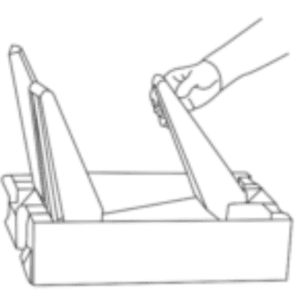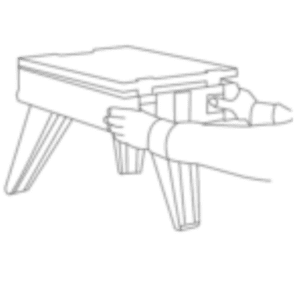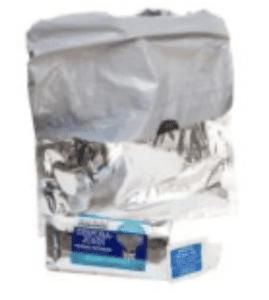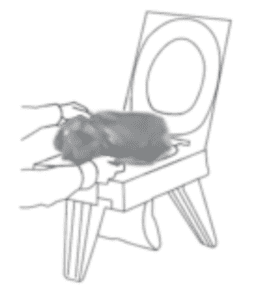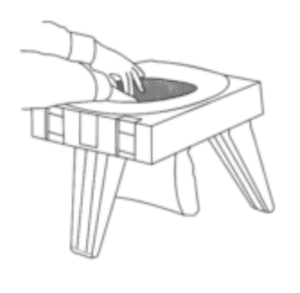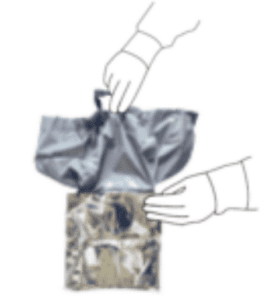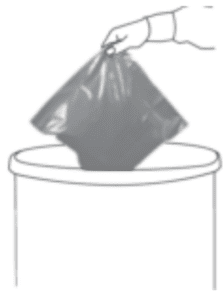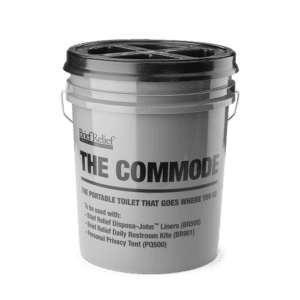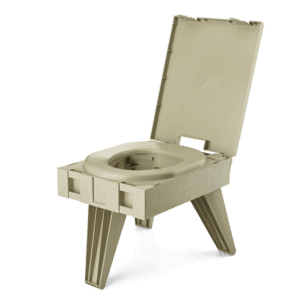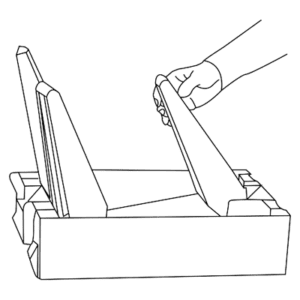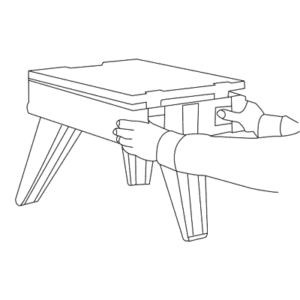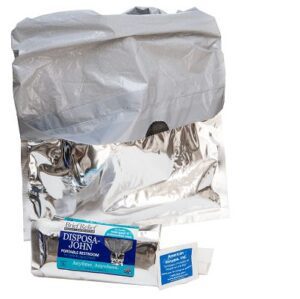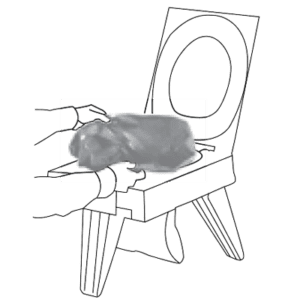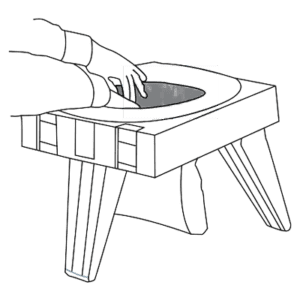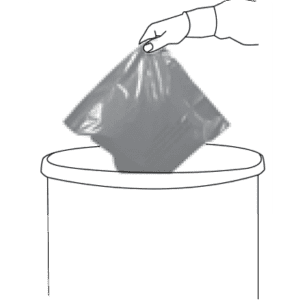Latest News
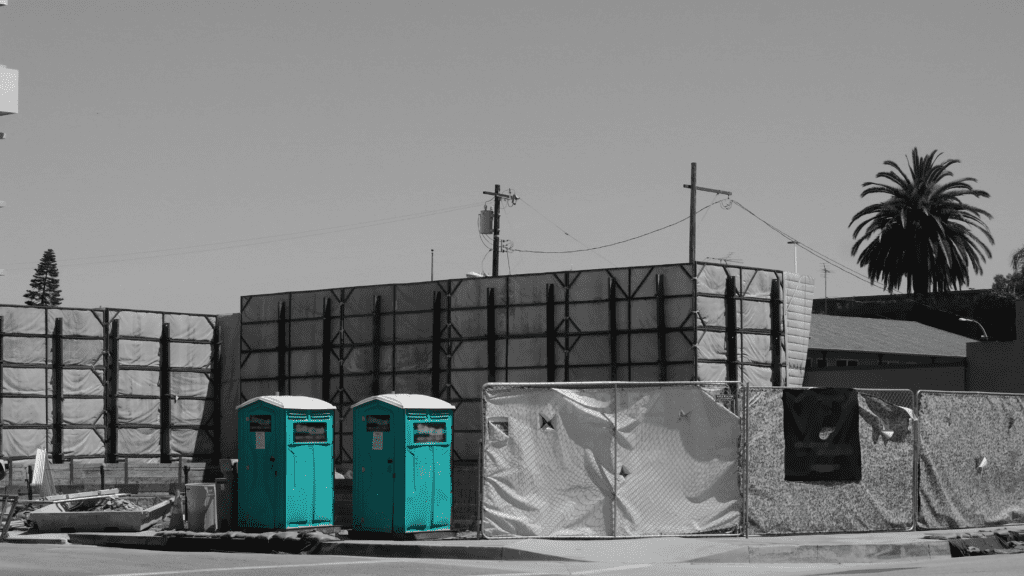
If you’ve ever been on a remote job site or had to use the restroom while working miles away from the nearest service station, we’re sure you’ll agree that Porta Potties are a ubiquitous portable toilet solution.
Unfortunately, many workers find having to use them so unpleasant, they’ll actually hold it in to avoid using one. Everyone knows that putting off using the restroom is hazardous to your health, but what are the alternatives?
What if we told you there’s a better way? What if there was a cleaner, more sanitary (and way less smelly) way to provide portable toilets for your employees in the field?
Introducing Portable Commodes
What’s a portable commode? We’re so glad you asked! Portable commodes are easy-to-transport systems, usually consisting of a privacy tent, receptacle, and toilet seat. But what really makes them a preferable alternative to a Porta Potty is that they’re used in conjunction with a waste bag.
Waste bags are a convenient and sanitary solution when you need to go on the go.
- Each bag is filled with a powder that gels and solidifies waste.
- The powder also acts as a decay catalyst, using natural enzymes to break down waste and neutralize odor and bacteria.
- And unlike Porta Potties, each bag can be sealed up tightly and safely disposed of after use!
Need more convincing? We’ve rated both Porta Potties and portable commodes across several categories to help you decide which system is right for your next event.
Round 1: Cleanliness
Let’s not beat around the bush; Porta Potties are gross. People are in such a hurry to get in and out that aiming is no longer a priority.
Throw some carelessly-placed toilet paper into the mix, and it’s just a stinky, soggy disaster. If you’re lucky, there might be a hand sanitizer pump inside. If you’re really lucky, it won’t be empty.
With portable commodes, there’s no mess, no spillage, and no smell. The polymers and enzymes in the waste bag turn the waste into a deodorized gel, eliminating any residual odor. Each portable waste bag even comes with ample toilet paper and antimicrobial wipes.
Cleanliness Score:
Porta Potty – 1/10
Portable Commode – 8/10
Round 2: Portability
How easily can you transport Porta Potties to remote locations? Because of the height and weight of a standard Porta Potty, they have to be delivered and carted away on trucks. Some of the heavier ones even require a crane!
With portable commodes, like the Brief Relief Lavatory System, all you need is a flat surface to set up the privacy tent. Place the commode inside, line it with a portable waste bag, and you’re in business!
Plus, since they’re super lightweight and compact, you can throw it in your trunk and avoid the hassle of truck delivery and removal.
Portability Score:
Porta Potty – 2/10
Portable Commode – 10/10
Round 3: Cost
On average, it costs around $100 per day to rent a single Porta Potty. Want the convenient extras like mirrors, purse shelves, and hand sanitizers? It can cost thousands of dollars to accommodate a large crowd, and that’s just for one day!
The Brief Relief Lavatory System costs less than $300. It comes with a privacy tent, a commode with a full-sized seat, and enough supplies for ten people for one day. The tent and commode can last for years when cared for properly, and replacement supplies are around $200 for a pack of 50.
Cost Score:
Porta Potty – 2/10
Portable Commode – 7/10
Round 4: The Stink Factor
I mean, this one kind of speaks for itself. While Porta Potties do make an effort to minimize unpleasant smells (you’ve seen that blue cocktail of chemicals working hard down there), they’re still literally just tiny houses full of gallons of waste. There’s no way around it. The stench of a Porta Potty is otherworldly.
A portable commode, however, doesn’t actually store any waste. You simply seal up the waste bag and dispose of it in any trash receptacle! And before that happens, the powder in the bag eliminates bacteria and odor.
Stink Factor Score:
Porta Potty – 1/10
Portable Commode – 10/10
Round 5: Maintenance
Servicing Porta Potties has been described as one of the worst jobs in the world. As we mentioned above, Porta Potties hold gallons of waste, and they’re typically only emptied when they’re close to overflowing.
Once filled, a crew comes in to stick a vacuum pipe into the bin and suck its contents into a tanker truck for treatment and disposal. It’s an intense, risky job.
With the Brief Relief Lavatory System, there’s minimal cleanup involved. The bags contain all the hazardous waste and are disposed of after they’re used. Simply sanitize your seat and at most, give the privacy tent a quick hose rinse. No muss, no fuss.
Maintenance Score:
Porta Potty – 2/10
Portable Commode – 9/10
Portable Lavatories Are the Clear Winner
It’s pretty clear portable commodes are the cleaner, simpler, and more cost-effective solution for a healthier, happier environment for your workers.
We should know. Brief Relief doesn’t just have a near-perfect satisfaction rate. We’re an industry leader in the innovation of safe, convenient products that allow users to manage waste in a dignified, reliable, and environmentally-friendly way.
Our solutions are perfect for anyone who needs more sanitary, functional, portable answers. No matter where life takes you, Brief Relief goes where you go. To learn more, check out our full portable commode line.

It’s a simple fact that people love the convenience of at-home delivery services, especially since the dawn of the pandemic. These days, we’re relying more and more on delivery services.
Drivers already face enormous challenges when it comes to delivering every single package on their trucks during their shifts. Still, most people probably aren’t aware of the most annoying, uncomfortable, and unhealthy challenge of all: needing to find a bathroom while out on their route.
Why Not Just Stop Along the Delivery Route?
Everyone knows that holding it in isn’t just annoying, it’s also incredibly unhealthy! You may be thinking, “Why don’t drivers just stop when they need to use the restroom?” Unfortunately, it’s not quite that simple.
It’s common for delivery drivers to work long, grueling shifts since most delivery service providers don’t allow drivers to return with any undelivered packages from their routes. Drivers have to hustle to unload all of their deliveries during a single shift.
Furthermore, most drivers are tracked and timed! Any time a driver’s stop clocks in at more than a few minutes, their employer gets a notification, leading to drivers being chastised and, in some extreme cases, sent home for “wasting time” by going to the bathroom.
Where Does One Go?
So where does that leave drivers when nature calls? While they may catch a lucky break with a delivery to a convenient office lobby or coffee shop, more often than not, drivers are forced to make due with makeshift toilet solutions while on the go.
We’ve heard of all kinds of workarounds — plastic bottles, cleaning wipe containers, and even small trash cans in a pinch. These options are simply irritating and unsanitary, especially for female drivers!
WAG Bag®s Are the Solution
Never fear, WAG (short for “waste alleviation and gelling”) Bag®s are the safest, most reliable solution for delivery drivers.
WAG Bag®s are a convenient, portable, and sanitary solution when you need to go on the go. Each bag is filled with a powder that gels and solidifies waste while neutralizing bacteria and odor.
- These double-lined, zipper-sealed bags are made of durable, puncture-resistant materials.
- The outer lining has a secure zip-top that creates an airtight seal when closed.
- When you’re finished, you can simply toss them into any trash can.
And WAG Bag®s are for everyone! Included in Brief Relief’s huge range of sanitary, portable toilet solutions is the Brief Relief Liquid Waste Bag. This mighty bag holds up to 20 oz of liquid and is ideal for all drivers, whatever their gender.
The WAG Bag® has truly been an overlooked need by many organizations, and it’s one that can help drivers complete their routes without risking their health and comfort.
Trust us, our sister company, Cleanwaste, is the creator of the original WAG Bag®, and years of research went into forming the safety, reliability, and durability of our bags. Brief Relief doesn’t just have a near-perfect satisfaction rate. We’re an industry leader in the innovation of safe, convenient products that allow users to manage waste in a dignified, reliable, and environmentally-friendly way … and all our bags are made in the USA.
To learn more about how Brief Relief’s waste bags are providing safer, more sanitary solutions for all, check out our full product line.

When it comes to employee safety and sanitation across the construction, utility, and mining industries, the Occupational Safety and Health Administration (OSHA) prides itself in making sure employers walk a straight line. So, don’t just guess at OSHA’s regulations for restrooms (hefty fine, anyone?). Instead, let us share them with you. We’ll even provide you with an easy solution at the end to make sure you’re OSHA compliant.
What You Need For Restrooms to Be OSHA Compliant
To stay compliant, make sure you check all the following boxes:
Minimum Number of Facilities
Toilets have to be provided for employees according to the following numbers:
| Number of employees | Minimum number of facilities (separate for each sex) |
| Less than 20 | 1 |
| Over 20 | 1 toilet seat and 1 urinal per 40 workers |
| Over 200 | 1 toilet seat and 1 urinal per 50 workers |
And if these numbers weren’t vague enough, OSHA goes on to say that “employers must provide an adequate number of restrooms for the size of the workforce to prevent long lines.”
As you’re very well aware, restroom needs depend on a variety of factors, including fluid intake, medical conditions, medications, air temperature, and more.
For example, during cooler months, you could get away with the minimum number of facilities at the job site. But during warmer months, you may need to double that number as your employees will likely consume more liquids to stay hydrated. (Speaking of which, if you’re looking for the best way to protect outdoor workers in extreme heat, look no further.)
And when it comes to mine safety, the Mine Safety and Health Administration (MSHA) requires surface coal mine operators to provide at least one approved sanitary toilet at a location that’s convenient to each surface work site. They also require one additional approved sanitary toilet for each 10 miners working at a location.
Good Sanitation Standards
OSHA also requires job site restrooms to be in sanitary condition. Employers should provide:
- Hot and cold running water (or lukewarm water)
- A cleansing agent, like hand soap
- Warm air blowers or individual hand towels (e.g., paper or cloth)
- Trash cans for disposal of hand towels and feminine hygiene products
And, of course, we need to mention cleanliness, as in how often the portable restrooms are cleaned.
While there are no set rules, OSHA requires employers to “regularly” evaluate toilet conditions and set routine servicing schedules for cleaning, waste removal, and supply replenishment. (The servicing scheduling should account for the number of on-site toilets, workers, and shifts.)
Also, keep in mind that these are the minimum restroom requirements set forth by OSHA. Be a decent human. Go above and beyond to make sure your workers’ restroom experience is as enjoyable as possible.
Immediately Available Restrooms
Also according to OSHA, employers with mobile workers must provide readily available transportation that provides prompt access (i.e., less than 10 minutes) to restrooms if they are not available at the work location.
Again with the ambiguity, we know.
But as an employer, this restroom requirement actually does benefit you as well because it cuts down on what we like to call “rolling costs.”
Think about it: Do your employees have to use a company vehicle to travel to a bathroom from the job site or construction site? How much gas is used every trip? How many extra miles is that putting on the vehicle, adding to maintenance costs?
When you consider all those related expenses, your employees’ hourly cost can easily quadruple, if not more.
Provided with Reasonable Restrictions
OSHA also requires that you avoid imposing “unreasonable restrictions” on restroom use, such as those that cause extended delays or limit restroom use—i.e., locking the doors and requiring the employees to ask and sign out a key.
Important note: This still means you as an employer need reasonable restrictions on access to toilet facilities. Whether considered reasonable or not will be up to the discretion of OSHA’s compliance officer if a citation should ever be issued.
OSHA evaluates restrictions on a case-by-case basis, giving careful consideration to the nature of the restriction (i.e., how long workers have to delay restroom breaks) and employers’ explanations.
[Psst—If you feel like nerding out over the exact implications of this requirement, here’s OSHA’s reference number: §1910.141(c)(1)(i). You’re welcome.]
How to Meet All Restroom Requirements for OSHA Compliance
We’d be doing you an injustice not mentioning Brief Relief’s line of products here. (Shameless plug to follow.)
Consider the Brief Relief Lavatory System to be your OSHA-compliant, full-service bathroom solution for mobile crew members. It comes with a privacy shelter, commode, full-sized seat, and supply of single-use Disposa-John waste bags.
To use it, an employee simply sets up the privacy shelter, places the commode inside, and lines it with a Disposa-John waste bag. When they do their doody, the chemical compounds inside the waste bag convert the liquid and solid wastes into an odorless gel. When finished, the employee simply removes the waste bag and seals it closed.
Voila!
And because Brief Relief waste bags are non-toxic and landfill-safe, they can be thrown away in any regular trash can.
Storage is effortless as well. Workers can set up the Brief Relief Lavatory System and fold it away in a carry case in a matter of minutes.
No more bacteria-infested, smelly porta-potties. No more hours of wasted time and money trying to get to and from the restroom sites. No more privacy issues for team members. We created a solution that successfully tackles OSHA’s restroom requirements and common portable toilet problems.
To browse the complete line of Brief Relief products for your workers, visit our shop.
From tending to a facility that’s lost power from a blown transformer to repairing an electrical malfunction in a residential home, going to the bathroom should be the least of an electrician’s worries. Yet it’s one that can cause the most hubbub.
Which is why the best tools for electricians have nothing to do with the job itself, but everything to do with their bodily needs.
The Benefits of Having a Portable Bathroom Solution in Electricians’ Tool Kits
Storing a privacy tent, portable commode, and waste bags in your electricians’ service vehicle benefits them as much as it does you.
They Cut the Cost of Bathroom Breaks
When electricians need to leave a job to find a bathroom, their days become longer. And not only that, but when you add up all the time lost to bathroom breaks that require them to leave the job site in search of a running toilet, you realize how many service call opportunities may have been missed.
To paint the picture a bit more clearly, let’s break the potty numbers down.
Imagine an electrician makes a 20-minute bathroom run three times a day. That’s an hour per day, or five hours per week, lost to restroom breaks. And if the average hourly wage of an electrician is $25 per hour, you’re losing approximately $6,250 a year due to toilet visits (assuming they work 50 weeks a year).
And that’s just the cost associated with wages.
You also need to consider “rolling costs.” Think: Do they ever have to travel to a bathroom? How much gas is used for every trip? How many extra miles is that putting on the company vehicle, adding to maintenance costs?
(For the complete panorama on cost breakdown, check out our savings calculator.)
They’re Sanitary
Norovirus, hepatitis A, and salmonella are just a few viruses and bacteria found in public restrooms—on toilets and other surfaces. (Gross!)
We understand that public restroom cleanliness isn’t always top-of-mind, especially when the need to go feels like life or death. But if you were able to provide a portable restroom solution that’s not festering with illness-causing pathogens, wouldn’t you?
Introducing: Brief Relief products.
Brief Relief offers a line of portable bathroom products fit for any off-site technician or electrician work, including commodes, liquid and solid waste bags, and privacy shelters.
The portable waste bags are OSHA-compliant, odor-free, puncture-resistant, and spill-proof. Once properly sealed, the enzymes inside the bags neutralize the waste by breaking it down into simple salts and water.
They’re also landfill safe, meaning you can throw them away in any regular trash bin. Plus, each bag comes with toilet paper and antimicrobial wipes.
They’re Lightweight and Easy to Set Up
All of Brief Relief’s personal-lavatory systems are lightweight and set up within seconds.
For example, the Briefcase Commode weighs only seven pounds and transforms from a convenient carrying case to a fully functional portable bathroom in a few seconds.
Here’s how:
1. Pull out each leg until it snaps into place.
2. Press thumb tabs to remove the lid.
3. Unfold the waste bag.
4. Set the waste bag inside the commode.
5. Do your business as usual. (The seat holds the waste bag in place. Alternatively, the waste bag can cover the seat to keep the seat clean.)
6. After use, lift the bag with the attached draw straps. Holding the straps together, slide the liner closed and tie straps. Tuck the liner inside the foil bag and firmly seal the zip-top.
7. Throw away the used bag in any trash. (Unlike most chemical toilets and Porta Potties, Brief Relief’s solid waste disposal bags are landfill safe.)
They’re Private and Can Be Used Year-Round
We get it. Using the client’s bathroom isn’t the most ideal, but when nature calls, nature calls. And public restrooms aren’t always nearby.
With commodes and their accompanying privacy shelters, there will always be a bathroom within each.
Like the commodes, the privacy shelters set up and break down easily, coming with a carry case that makes storing it in the service vehicle easy.
Full sun out? Raining cats and dogs? No problem! Brief Relief’s gray privacy shelters have opaque gray fabric that offers full privacy whenever the other kind of nature calls, no matter the weather.
The Portable Bathroom Solution for Electricians’ Tool Kits Is Here
Whether you’re looking to cut the cost of bathroom breaks, keep things more sanitary, or offer electricians a more private bathroom solution, Brief Relief has just what you need. Check out the full line of products for your team today.
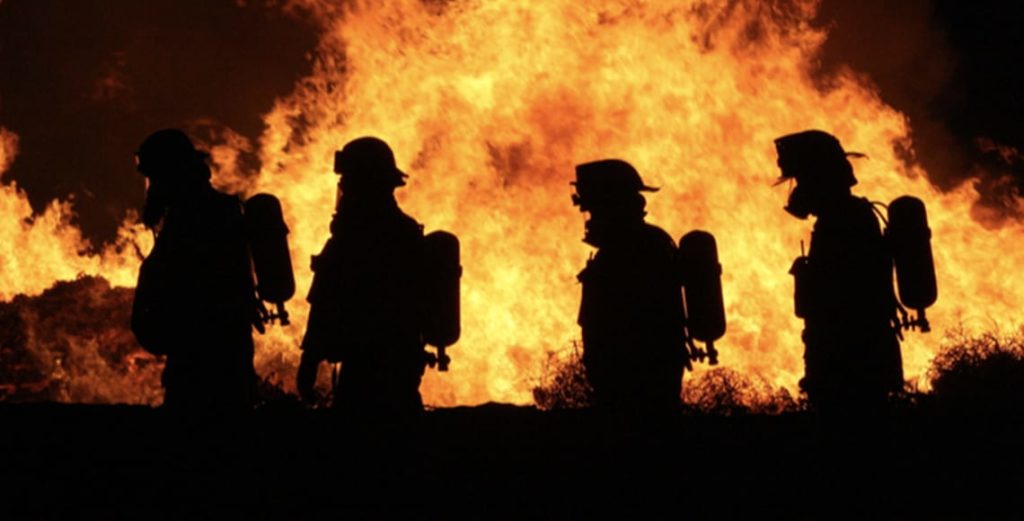
[vc_row][vc_column][vc_column_text]When combating wildfires, firefighters routeinly face a number of dangers—extreme temperatures, smoke inhalation, and snake or insect bites, just to name a few. While wildfire firefighters undergo rigorous training to mentally and physically overcome these challenges and survive in the most primitive living conditions, they still need a bathroom solution that is convenient, sanitary, and—most importantly—portable. [/vc_column_text][vc_column_text]
But First, How Do Firefighters Normally Go to the Bathroom?
Firefighters are generally encouraged to go to the bathroom whenever they have the chance, so they can hold it when they’re on call. Many also find themselves monitoring their food and beverage intake throughout the day to minimize the possibility of needing to relieve themselves at inconvenient moments.
When nature calls en route to an emergency or when they’re already on the scene, a firefighter is left with few options other than waiting until an opportunity presents itself. This might mean slipping into a nearby business, ducking behind a tree—or even taking advantage of the facilities in an actual burning building (true story).
(And if you wonder whether wearing adult diapers is an option, forget about it. It’s impractical to wear them on a daily basis, and more than a few firefighters just choose to go in their turnout gear when all other options are exhausted.)
The men and women bravely fighting wildfires often face even greater challenges when it comes to finding bathroom facilities.
It’s not uncommon for wildland firefighters to work 16 hours straight with just an occasional five-minute reprieve to eat throughout the day. For these professions, potty breaks are very few and far between.
To say firefighting is a job that can deprive its workers of even the most basic bathroom access is an understatement.
Why Portable Bathrooms Are the Way to Go for Wildland Firefighters
Brief Relief offers a variety of sanitary portable bathroom solutions that should be a part of every firefighter’s supplies. Here’s why:
Brief Relief Bathroom Products Work for All Types of Waste
The Disposa-John Portable Restroom is Brief Relief’s waste bag solution for both liquid and solid wastes. It boasts a thick, 3-layer barrier “bag-in-bag” design that comes with multiple closures to seal in waste and odor. It contains the same patented materials as the Brief Relief Liquid Waste Bag, which breaks down wastes and converts them into a deodorized gel.
For extra sanitation, the Disposa-John Portable Restroom comes with an antimicrobial wipe and toilet paper. You simply throw any used toilet paper, wipes, and even feminine hygiene products straight into the bag. Seal it up, and store it away until you reach a trash receptacle.
Talk about handy.
They’re Lightweight and Portable
Depending on how far wildland firefighters need to walk or how much they have to accomplish that day, their fireline pack can weigh up to 40 pounds, if not more.
The beauty of Brief Relief’s Liquid Waste Bags and Disposa-John Portable Restrooms is that each bag weighs mere ounces. Plus, they fold flat for easy storage. This means firefighters can easily slip them into their pack, without worrying about extra weight. (Trust us when we say every extra pound matters!)
Brief Relief also has a line of portable, lightweight commode systems that can be set up in all terrains, perfect for storage in vehicles for use pre-departure and upon return:
- The Briefcase Commode can be set up in seconds and is the same height and size as a standard toilet. It supports up to 500 pounds.
- Porta-Quick Utility Pack is also the standard height of a toilet seat and comes with a set of waste bags. It supports up to 300 pounds.
They’re Female Firefighter-Friendly
Female firefighters have even fewer options to relieve themselves than their male counterparts. (We get it—discreetly emptying your bladder into a Gatorade bottle off somewhere in the woods isn’t quite as simple.)
Brief Relief portable bathroom products make the “going” experience much more inclusive.
We designed the Brief Relief Disposable Urinal Bags with all genders in mind. The splash-proof funnel opening directs liquid to the bottom of the pouch, where it’s instantly converted into a deodorizer gel. And thanks to its sturdy design, the bags are puncture-proof and odor-safe. (The last thing you need to worry about while fighting fires is cleaning up a smelly mess in your pack at the end of the day.)
What more could you ask for?
Check out Brief Relief’s sanitary portable bathroom products, and say yes to better.[/vc_column_text][vc_separator][/vc_column][/vc_row][vc_row][vc_column][vc_column_text]
To learn more about how Brief Relief improves work quality for unique jobs, please check out our line of products.
[/vc_column_text][/vc_column][/vc_row]

As of summer 2022, the average cost nationwide for a gallon of diesel fuel is $5.28—$2 higher than this time last year. In some states, like California, the price hike is even higher, with diesel prices reaching an average of $6.40 a gallon.
For owner-operators and others who foot the bill, this equates to $600 more spent every time a driver fills up, assuming 300-gallon fuel tanks. (We’ll let you do the math and multiply that by the number of trucks in your fleet…)
We understand that cutting costs is top priority these days. Here’s a roundup of practical ways fleets can reduce fuel costs and combat rising fuel prices.
Optimize Routes
Improving your drivers’ routes can reduce time spent in traffic, stops at stoplights, and miles driven—all of which conserve fuel.
One of the best (and perhaps obvious) ways to optimize routes is by using a GPS vehicle tracking solution. They’ve proven to help fleets reduce fuel costs by up to 25% and total miles driven by up to 10%.
Plus, depending on the tracking system, some allow you to track how much fuel each truck uses in gallons or dollars, as well as coach drivers or recommend engine tune-ups.
Reduce Out-of-the-Way Stops
When nature calls, it doesn’t check for optimal stopping points first. Depending on your truck drivers’ routes, finding a convenient place for bathroom breaks can be a challenge.
Instead of driving miles out of the way or sitting uncomfortably until the next on-route stop, drivers can find comfortable, convenient relief by using the Brief Relief portable Briefcase Commode. It’s compact, easy to store, and quick to set up.
Paired with the Brief Relief Privacy Shelter, the Briefcase Commode allows truck drivers to “take care of business,” no matter where your company’s business may take them.
Keep an Eye on Tire Pressure
When not properly inflated, tires flex more under load. This produces heat and increases rolling resistance. (We didn’t say it—the US Environmental Protection Agency did!) Also according to the EPA, for every 10 pounds per square inch (PSI) below the recommended air pressure level, underinflated tires reduce truck fuel economy up to 1%.
In layman’s terms: your fleets are wasting fuel with underinflated tires.
The solution? Install tire maintenance management systems to ensure drivers and maintenance personnel check tire pressure frequently. (Doing this electronically and automating it makes things even easier).
Watch the A/C
In addition to record gas prices, record heat is in the books for this summer. That means increased A/C usage.
While fuel consumption in semi trucks using A/C hasn’t been widely studied, it’s known that in cars, A/C can increase fuel consumption up to 20% due to the extra load on the engine.
Rolling the windows down and using portable fans can only help so much. A cooling towel like Heat Relief gives drivers an additional way to beat the heat. They’re lightweight, versatile, and use the latest hyper-evaporative technology that allows wearers to find reprieve from hot weather while on the go.
Cut Down on Idling
Leaving a truck idling leads to a whole slew of problems.
For starters, when a truck idles, it burns through a gallon of fuel an hour—all while covering no distance. This decreases overall fuel economy by 1%. Translation: Profit loss.
Idling also accelerates engine wear and tear (as seen by warranties applying to “hours operated” instead of “miles traveled.”) Translation: Unnecessary maintenance costs.
And to put the cherry on top, rest-period idling results in emission of about 11 million tons of carbon dioxide, 55,000 tons of nitrogen oxides, and 400 tons of particulate matter annually. And that’s just in the United States alone. Translation: Environmental costs.
While there’s no standard solution to reduce truck idling, here are a couple that could work for you.
Introduce a company-wide policy change, using a fleet management system that logs idle time and notifies drivers of when they’re reaching the recommended limit.
Or install Automatic Engine Start/Stop (AESS) systems on your fleet. As the name suggests, they can automatically stop a truck’s engine if it’s left unattended for a certain period of time.
The Ultimate Key to Reducing Fuel Costs? Be Mindful and Proactive
Unfortunately, you can’t stop rising fuel prices, nor can you abruptly halt trucking operations. But you can intentionally decide which measures to take to save on fuel this summer—and going forward.
We covered just a handful of ways to reduce fuel costs. But what’s the best way? Whatever works for your drivers and fleets and you can stay accountable to. (After all, there’s no use installing the latest technology, only for it to collect “dust” on the dashboard, going largely unnoticed after the novelty wears off…)
Start with one method. When your drivers have mastered it, move onto the next.
Baby steps and consistency will get you to where you want to be: less overhead, more profits.
At Brief Relief, we’re in the business of offering comfort and relief for all mobile workers—whether that’s providing privacy through our travel lavatory systems or a respite from heat through our cooling towels. Contact us today to learn more about our suite of products and how we can serve your team.
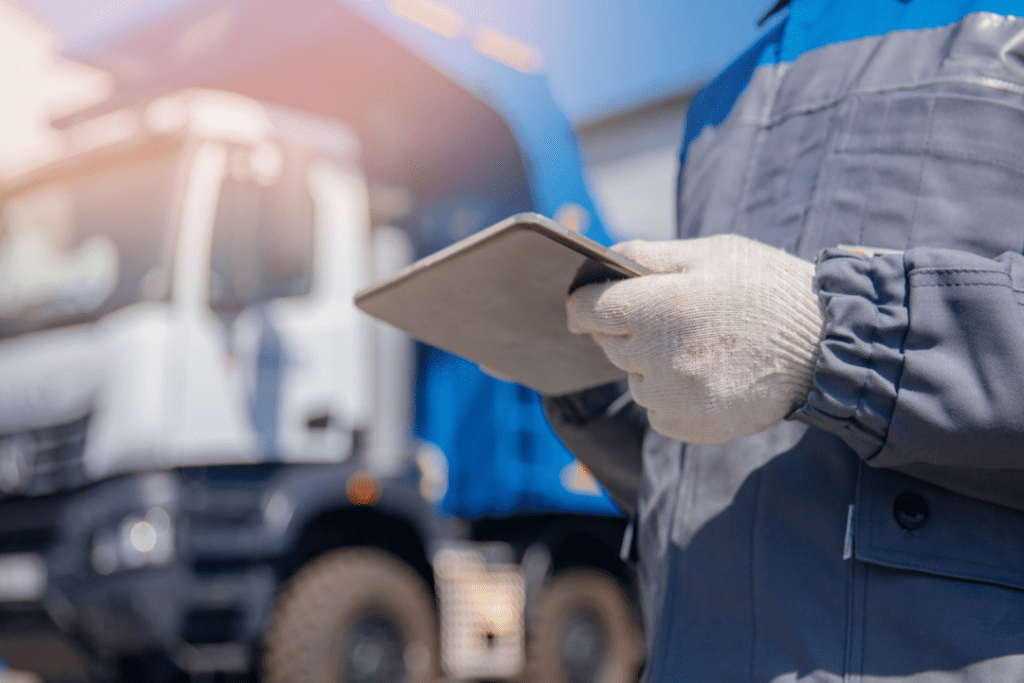
Public Relations problems arise from actual problems.
That’s right. PR crises often surface when there’s something fundamentally wrong within your business that’s brushed under the rug or ignored. And until that something’s addressed, you’ve got a ticking time bomb on your hands.
Tick, Tick…
But what if we said utilities companies can drastically reduce the number of PR nightmares they have for indecent exposure, workplace accidents, or other mishaps?
(Yes, workplace mishaps are actually something to worry about. Take the city of Boston, for example. It has suffered numerous fatalities in the past 18 months. And when workplace accidents aren’t handled properly, families dig for answers.)
Luckily, avoiding PR disasters isn’t a pipe dream. It just requires being proactive before sh!t hits the fan.
Here’s how.
Ensure workplace safety
Electrocutions, falls, environmental stress, and fires are some of the most common workplace risks and hazards in the utility industry.
While yes, some incidents are beyond manager control, doing everything you can as a company to ensure workplace safety will lessen your chances of enduring a public relations disaster.
Some measures you can take today are:
- Properly outfit your workers for the type of work they do, including things like reflective gear
- Take steps to prevent falls (i.e. proper ladder training, fall protection systems)
- Pay attention to the weather
- Put procedures in place to prevent electrocution
- Encourage employees to report workplace hazards as they see them
And who knows? You could wind up on the list of America’s Safest Companies and win an award, just like Rosendin Electric did last year.
Create a crisis communication plan
No matter what industry you work in, having a crisis communications plan smoothes out PR disasters before they escalate.
Include the following at a bare minimum:
- Explicit instructions for each department’s roles in case of a crisis
- Contact information for PR spokespeople
- Customizable response template for press releases
- Social media action plan
To address the most important elements, work through these essential steps to create a crisis communications plan.
Monitor social channels in real-time
Having an employee in a branded work vest caught on camera relieving themselves and getting it splayed all over the internet is a major PR concern. And one that’s got substance with the prevalence of phone cameras.
It seems like every other day someone gets caught breaking indecent exposure laws.
Here is a news article about the Hays County commissioner getting caught on camera urinating in a parking lot in February. Here is another story about an unidentified man urinating on a church in April, and here’s another instance of a Zamboni driver getting sacked for public urination the same month.
In the case of your utility company, what can you do if an employee is filmed answering nature’s call in public?
Act quickly!
Make sure your social team monitors, reviews, and follows activity across your social media channels, including mentions of your brand. To save time, they can even use social listening tools like Hootsuite, Sprout Social, or Agorapulse.
While it won’t undo what’s already been done, you can at least staunch the wound a bit.
Better yet, provide easy access to portable bathrooms
Don’t risk your employees getting caught on camera—or worse, blown up on social media. Look for a portable toilet solution that protects your reputation, time, and wallet.
Look no further than Brief Relief!
The Brief Relief Lavatory System comes with a privacy shelter, commode, full-sized seat, and supply of Disposa-John waste bags. It’s a complete personal bathroom at any worksite.
Set-up is simple and optimized for ultimate privacy.
Once the privacy shelter is set up, all workers have to do is place the commode inside and line it with a Disposa-John waste bag. When they’ve finished their business, they simply toss the bag away in the nearest waste bin. Disposa-Johns are odorless, and compounds within the bag convert liquids to solids (meaning they’re spill-proof, as well). Plus, they’re water-repellant, non-conductive, and fire retardant, meeting CPAI-84 standards.
No more close calls with indecent exposures. No more sanitation concerns with smelly porta-potties. No more workers holding it in until they can find a place to relieve themselves. (True story.)
Sound like your cup of tea? To see the complete line of Brief Relief products for your workers, visit our shop.

As an operations manager, you deal with a lot of crap. Reporting to insistent higher-ups, keeping your team productive, resolving conflicts between departments. It’s enough to wipe anyone out. So, we totally get that looking for a Porta Potty alternative for your remote teams may not be high on your list.
But did you know the restroom choices you make not only affects employee health, but also their morale and your company’s bottom line?
Choose well, and your team won’t cringe at what’s available for their use when nature calls. Choose poorly, and you could put their health at risk, land some hefty fines for breaking OSHA regulations, and smear your public reputation. Not to mention the amount of extra work and time that goes into coordinating emptying Porta Potties.
Decisions, decisions.
If Porta Potties and other chemical toilet options are starting to become a real stink for your remote teams, don’t worry. We have just the solution for you. They’re called Brief Relief commodes.
Here’s why they’re the best way to go! (You’re welcome in advance.)
The 411 on Brief Relief Commodes
In a nutshell, Brief Relief commodes are sturdy, portable, lightweight solid waste disposal solutions. They come in two types:
- Brief Relief Commode. This commode is made to the height of a standard toilet seat and comes with a gamma lid.
- Briefcase Commode. This option collapses into a briefcase-sized box that weighs just seven pounds and can be set up in seconds. (When you gotta go, you gotta go!)
When used with a pop-up privacy tent and Disposa-John portable restroom bags, our commodes are some of the most versatile portable toilet solutions you can buy. (We can’t make that sh!t up. Really, check it out for yourself.)
Why Our Commodes Smoke the Porta Potty
For users, Brief Relief commodes’ attractiveness comes from their size, cleanliness, and easy solid waste disposal. (Plus, they won’t have to hold their nose going in.)
For operations managers, the benefits are plentiful:
They Can Be Used Anywhere
To maintain OSHA compliance, companies must provide readily available access to restroom services (i.e. employees can reach them in less than 10 minutes).
While Porta Potties are a viable on-site, portable restroom option, they don’t provide instant bathroom access. (Think about it. The 4-foot by 4-foot rectangular box is only functional when placed on even ground.)
Brief Relief Commodes? They’re extremely versatile AND play by OSHA’s rules.
They’re light and small enough to transport in a crew’s vehicle, and they’re designed for sturdiness on the most uneven terrain. The Briefcase Commode also transforms from a convenient carrying case to fully functional outdoor restroom in a few seconds.
Don’t believe us?
Here are its specific set-up instructions:
1. Pull out each leg until it snaps into place.
2. Press thumb tabs to remove the lid.
3. Unfold the foil bag.
4. Set foil bag inside the commode and unfold the waste bag.
5. The seat holds the waste bag in place. Alternatively, the waste bag can cover the seat to keep the seat clean.
6. After use, lift the bag with the attached draw straps. Holding the straps together, slide the liner closed and tie straps. Tuck the liner inside the foil bag and firmly seal the zip-top.
7. Throw away the used foil bag in any trash. (Unlike most chemical toilets and Porta Potties, Brief Relief’s solid waste disposal bags are landfill safe.)
They’re the Most Sanitary Option
In response to the COVID-19 pandemic, Portable Sanitation Association International updated the septic waste standard to at least one restroom toilet for every eight workers, following CDC and OSHA regulations.
They also require portable restrooms be spaced to accommodate social distancing and avoid creating lines.
Why?
Because a standard Porta Potty is a hotbed of viruses, including norovirus, salmonella, shigellosis, Hepatitis A, seasonal flu, and now, COVID-19.
But have no fear. Brief Relief is here!
With Brief Relief, employees will never have to worry about fly-infested Porta Potties on a hot summer day ever again. Our commodes’ single-use waste collection bags and kits are—as the name suggests—single use. One and done.
They also come with antimicrobial wipes and toilet paper, and the commode is made of durable plastic that can be easily cleaned with disinfectant spray or wipes.
Additionally, our portable, privacy shelters are well ventilated to let airborne microbes out—a.k.a. no more smell!
You’ll Rake in More Cash
Here’s how getting to the bottom of portable restrooms increases your bottom line:
Cut Costs on Bathroom Breaks
Imagine this:
If a telecommunications worker makes 20-minute bathroom runs three times a day, that’s an hour per day, or five hours per week lost to restroom breaks. And if the average wage of a telecommunications technician is $22.95 per hour, you’re losing approximately $5,738 a year due to toilet visits (assuming your employees work 50 weeks a year).
. . . And that’s just costs associated with employee wages.
Also take into account the “rolling costs.” Do employees have to use a company vehicle to travel to a bathroom? How much gas is used for every trip? How many extra miles is that putting on the vehicle, adding to maintenance costs?
When you consider all those related expenses, the hourly cost can easily jump to an average of $150/hour, or $37,500 a year!
(For the complete panorama on cost breakdown, check out our blog The Real Cost of Employee Bathroom Breaks.)
Cut Costs on Porta Potties
When you rent a Porta Potty, you’re not just paying to have it on company property and for maintenance. You also need to figure in the costs of delivery, placement, and removal. Because of this, Porta Potty rental can cost upwards of $300 per week.
Brief Relief can cut you some slack.
The daily restroom kits that pair with our commodes don’t require maintenance, delivery, placement, or removal. Each user handles their own liquid and solid waste bags, easily disposing of them wherever there’s a trash bin.
Easy peasy.
The Future is Brief Relief Commodes
Whether you’re tired of maintenance fees, are concerned about your team’s health, or need a more versatile portable restroom solution, Brief Relief commodes are your best option.
Make it your duty to provide your employees a clean, private, and convenient way to go when they need it, where they need it. Plus, they’re sanitary enough to keep OSHA (and PR teams) off your back while padding your bottom line.
Check out our full line of commode systems to get started today!
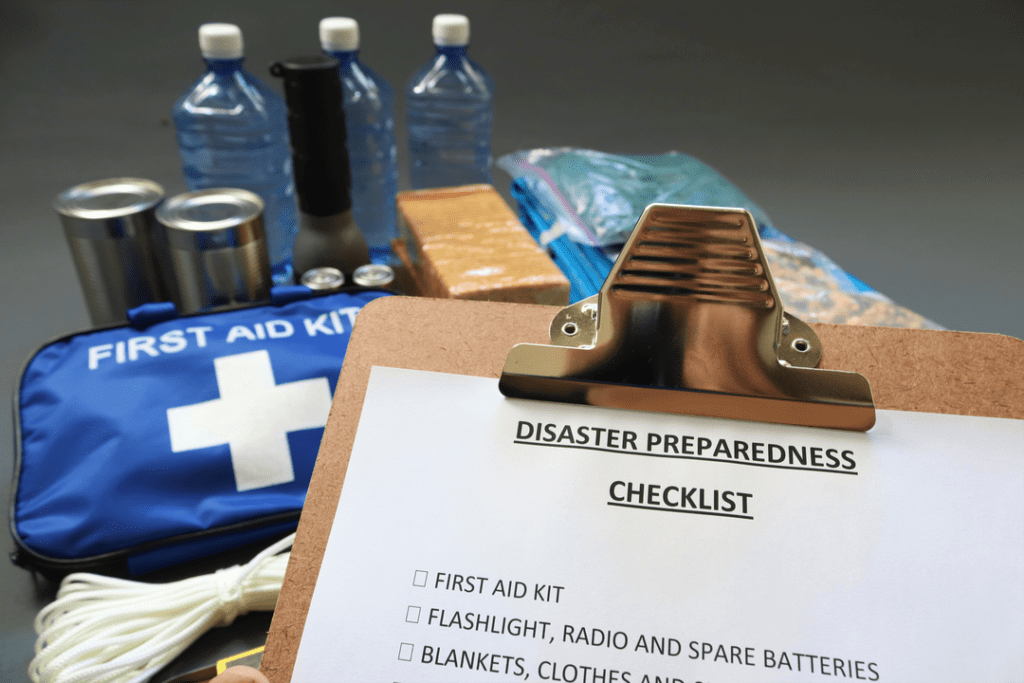
Without a doubt, there’s an increase in frequency and damage caused by major storms and tornadoes nationwide, such as the tornados that tore through Kentucky and the Midwest in December 2021 as well as the “superstorm” hurricanes.
Overall, 2021 was hailed as the second costliest year on record for the insurance industry ($145 billion) thanks to losses caused by natural disasters and secondary perils—i.e. smaller storms that bring hail, high winds, tornados, and flooding.
Read between the lines, and you’ll see where we’re headed: the need for emergency response and disaster supply kits and gear is rising.
Whether rescuing trapped victims, controlling the crowds, or treating and transporting victims, being a first responder in the wake of a natural disaster could mean long hours on call. At some point, first responders – or those they’re helping – will need to relieve themselves.
And while including waste bags in disaster prep gear makes the most sense, it’s not an industry standard. (We’d like to make it one.)
Here are five reasons why disaster preparedness should involve putting waste bags in supply kits and gear.
Going to the Restroom is a Basic Need
In times of calamity, food, water, first aid, and shelter are the main concerns. But these aren’t the only basic human needs. A basic human need is also being able to relieve oneself in a timely, sanitary manner.
At some point, nature calls, and every person needs to answer her.
But can’t people just hold it in for a few hours? You might ask. They could, but that can lead to even more painful complications.
Holding the urge to pee for extended periods of time can increase the risk of bladder infections and weaken bladder muscles. And holding in poop can cause severe constipation and bloating (… if there weren’t enough problems already!).
Everyone Involved Benefits From Disaster Supply Kits with Waste Bags
Response teams typically hand out blankets and basic disaster supply kits to civilians. They’re also likely to carry the same essentials for themselves, just in case.
These kits include what’s necessary to cover one’s basic needs—water, non-perishable food, and a first aid kit. But as we mentioned, going to the bathroom should also be considered a basic need.
By stashing a waste bag in a disaster supply kit or go bag, not only will civilians have their bathroom needs taken care of, but first responders will as well.
Waste Bags Are a Safe, Sanitary Way to Go without Electricity or Running Water
Natural disasters can leave roads inaccessible due to debris and fallen trees. Water utilities can be shut down to avoid contamination of water sources. And even if the disaster doesn’t destroy power lines, electricity will likely be turned off to prevent the risk of igniting leaking gas or causing an explosion.
If you put the dots together, you’ll see this is the perfect recipe for a clean freak’s worst nightmare.
No electricity means non-flushing toilets and having to find bathrooms in the dark at night. No running water means no ability to wash hands before or after using the bathroom. And the cherry on top—there could be a considerable number of people using the same bathroom.
Waste Bags Are a Quicker Solution
In the same light (no pun intended), spending too much time searching for a bathroom can impact the speed at which first responders conduct search and rescue operations or deliver medical attention. And assisting those who need to go also takes time away from the life-saving tasks at hand.
By including waste bags in disaster supply kits and first responder gear, everyone impacted will have an optimal solution for their bathroom needs.
Waste Bags for Disaster Supply Kits Just Make Sense
Considering the drastic turn of events and benefits to having a waste bag handy when disaster strikes, including them in supply kits, gear, and “go bags” just makes sense.
Having said that, not all waste bags are created equal. First responders need one that’s durable enough to withstand rough handling, convenient enough to be used anywhere, and sanitary enough to help people feel clean despite the unfortunate circumstances.
We’d be doing you a disservice if we didn’t introduce Brief Relief, a solution that offers first responders and the civilians they assist with a sanitary, convenient, and portable bathroom solution.
Brief Relief Liquid Waste Bags are puncture-resistant, odor-free, and spill-proof triple barrier bags for human waste. They use a specialized technology that converts waste into a deodorized gel, and they come complete with toilet paper and antimicrobial wipes.
When finished, Brief Relief waste bags can be thrown away in any regular trash bin as they’re made with non-toxic materials and are landfill-safe.
And if there’s nowhere private to go, Brief Relief’s Liquid Waste Bags can be easily paired with commode systems and portable shelters. (These include travel systems, curtains, canopies, and tents.)
For first responders in the aftermath of a natural disaster, where to go to the restroom should be the LAST worry on their minds—or the minds of those they’re helping—at the end of the day.
With waste bags, they can stay focused and save time, which could ultimately mean the difference between life or death.

